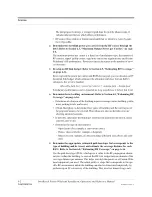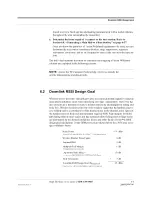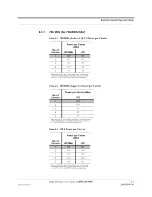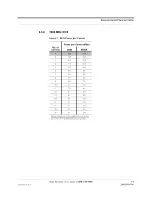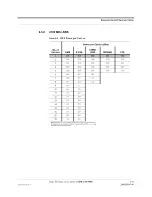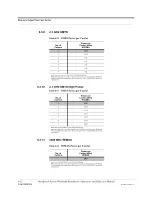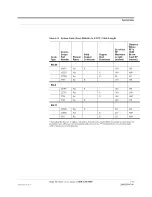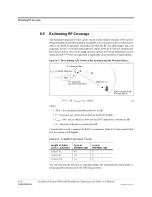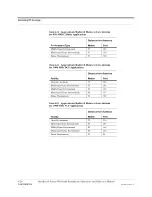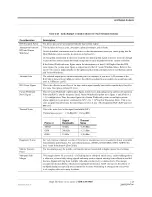
Estimating RF Coverage
6-16
InterReach Fusion Wideband Installation, Operation, and Reference Manual
CONFIDENTIAL
D-620616-0-20 Rev F
6.5
Estimating RF Coverage
The maximum output power per carrier (based on the number and type of RF carriers
being transmitted) and the minimum acceptable received power at the wireless device
(that is, the RSSI design goal) essentially establish the RF downlink budget and, con-
sequently, the maximum allowable path loss (APL) between the RAU’s antenna and
the wireless device. Since in-building systems, such as the Fusion Wideband, are gen-
erally downlink-limited, this approach is applicable in the majority of deployments.
Figure 6-1
Determining APL between the Antenna and the Wireless Device
APL = (P – L
coax
+ G) – RSSI
(1)
where:
• APL = the maximum allowable path loss in dB
• P = the power per carrier transmitted by the RAU in dBm
• L
coax
= the coaxial cable loss between the RAU and passive antenna in dB
• G = the gain of the passive antenna in dBi
Coaxial cable is used to connect the RAU to an antenna. Table 6-14 lists coaxial cable
loss for various cable lengths.
You can calculate the distance, d, corresponding to the maximum allowable path loss
using equations introduced in the following sections.
Table 6-14
Coaxial Cable Losses (
L
coax)
Length of Cable
(.195 in. diameter)
Loss at
850 MHz (dB)
Loss at
1900 MHz (dB)
0.9 m (3 ft)
0.6
0.8
1.8 m (6 ft)
1.0
1.5
3.0 m (10 ft)
1.5
2.3
RAU
P = power per
Distance = d
G = Antenna Gain
RSSI = power at the
wireless device
carrier from the RAU
L
coax
= Coaxial cable loss

